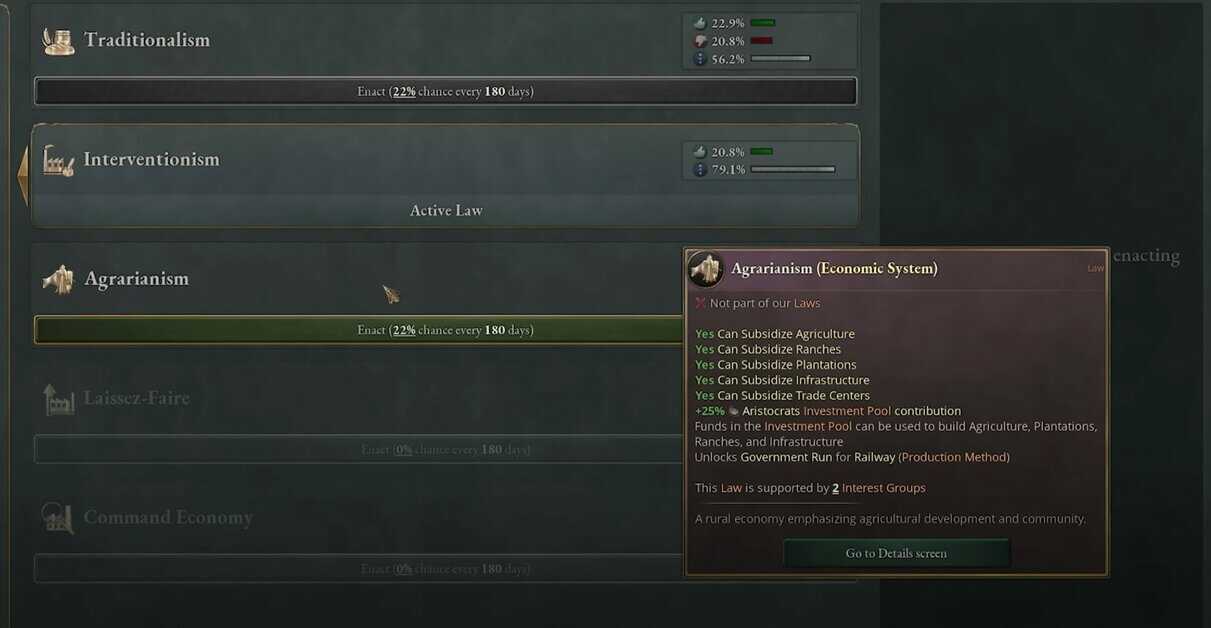When you have a nation to run with multiple expansions spread over the game map, you’ve got to make sure your economic flow is in a constant loop, and you’re moving towards prosperity and security. To upkeep this system, Victoria 3 provides its players with an Investment Pool Mechanic that players can use to provide benefits to their nation.
This guide will help you understand this mechanism and how to use it for your nation’s growth and best interest. So without further ado, let’s begin.
What’s the Investment Pool?
If you’ve never come in contact with economic and political terms, the Investment Pool mechanism might scare you and keep you away from understanding what it does in the game and how it will help your nation’s growth. However, worry no more; we’ve tried to simplify it for you.
As the name suggests, in Victoria 3, Investment Pool is a pool of money that is created when the pops who have an ownership share in their respective buildings or establishments deposit a portion of their dividends into the investment pool.
The number of deposits expands the size of your investment pool, and you can view how many people have contributed to it by hovering your mouse over the money icon on the screen.
Like it would be in real life, this investment pool acts as a piggy bank for the buildings you will construct in the future on your lands. However, only those buildings can be constructed that are allowed by the Economic System Law.
You can’t make or break this law; hence, there’s a constant obligation on how you will use the investment pool and the money in it.
Depending on the number of buildings you make and the resources you use for them, their cost will be paid from this very entity and deductions will be made to identify the amount left behind.
The required amount to buy the resources will be transferred to the treasury to make it easier to navigate the money you’re investing into your lawful, permitted structures.
The investment pool of your nation is an incredibly important tool; it is the main indicator of donations from pops, and it functions to use that money on those assets that are in an underlying investment.
The main purpose of an investment pool is to take away the burden from your national treasury. This allows them to have backup funds that will help them put that money into the structures and expand existing ones that will aid into your economy to grow.
Two main sources of money being invested into structures that can increase employment and generate revenues in your various industries will bring your economy into a healthy loop and flow.
Now that you know the basic understanding of the investment pool mechanism in Victoria 3, how it benefits, and what it does for your nation, let’s look into how you can enable it.
How to enable Investment Pool
In order for players to enable the Investment Pool Mechanism, players will first need to pass any of the below-mentioned economic laws.
Each of these laws has different variability of how much it lets Aristocrats or Capitalists fund to the Investment Pool and onto which buildings. Choose the one that suits you the most and your structural plans.
- Interventionism
- Agrarianism
- Laissez-Faire
Now enable the investment pool and wait for the money to come in. Of course, money won’t suddenly start flowing and expanding your investment pool; instead, you will have to see which buildings are generating profits.
This means that buildings must earn well and have full cash reserves. With a full cash reserve, they will give owner pops their portion of the money, which can be deposited into the investment pool.
In case it is taking more time than you desire, unlock the Mutual Funds technology and use that to transfer your production methods to Publicly Traded. This results in the growth of employment and eventually increases the money flow that can be put into the investment pool.
Industries and Buildings will soon begin to prosper once the Invest Pool funds are utilized. Money from the Treasury will be saved to be used on other buildings which will boost your GDP and productivity.
